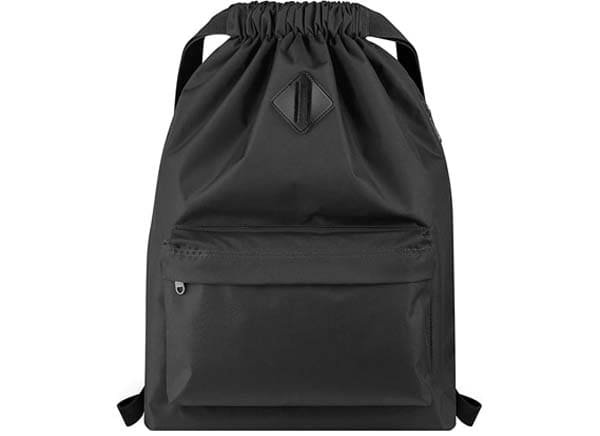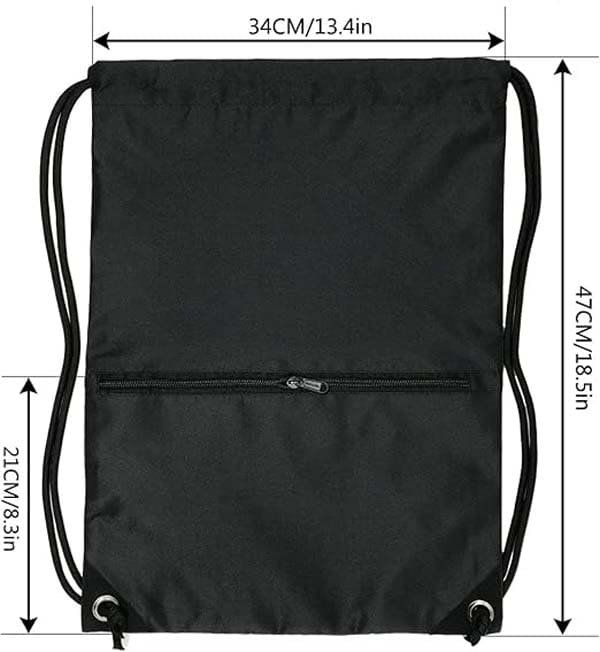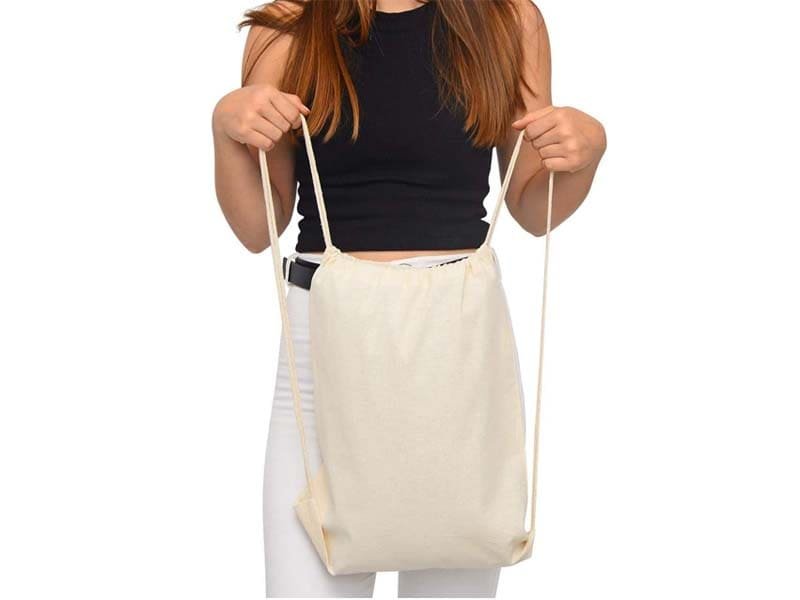Have you ever watched someone effortlessly sling a stylish backpack over their shoulder, hands free and essentials easily accessible? How do you make a drawstring backpack? It’s simpler than you might think! A drawstring backpack is a versatile, lightweight bag secured with a cord, perfect for daily use or outdoor adventures. Whether you’re a seasoned sewer or a beginner eager to craft your first bag, this comprehensive guide will walk you through each step, ensuring you create a personalized backpack that’s both functional and fashionable. Imagine the satisfaction of wearing a backpack you’ve made yourself.
Let’s dive into the creative and rewarding process of making your very own drawstring backpack.
Are Drawstring Bags Easy to Make?
Yes, drawstring bags are relatively easy to make, even for beginners, requiring basic sewing skills and simple materials.
Beginner-Friendly Design
Drawstring backpacks boast a straightforward design with minimal components, making them ideal for those new to sewing. With just a few fabric pieces and a simple sewing pattern, you can create a functional bag without feeling overwhelmed. This simplicity not only reduces the time needed to complete the project but also minimizes the potential for errors, allowing you to achieve professional-looking results with ease.
Minimal Sewing Requirements
The construction of a drawstring backpack involves basic sewing techniques like straight stitching and seam finishing. Unlike more complex bags that may require intricate detailing or specialized hardware, drawstring backpacks focus on essential sewing skills. This makes the project accessible for beginners while still offering enough complexity to be engaging for more experienced sewers.
Accessible Materials
Materials needed for drawstring backpacks are easy to source and affordable. From durable fabrics like cotton canvas and nylon to simple drawstrings, everything is readily available at fabric stores or online marketplaces. Additionally, the tools required are basic and often already part of a beginner’s sewing kit, reducing the initial investment needed to start your project.
What Are Drawstring Backpacks Made Of?

Drawstring backpacks are typically made from durable fabrics such as cotton canvas, nylon, polyester, or denim, combined with sturdy drawstrings and reinforced stitching.
Primary Fabric Choices
- Cotton Canvas: Known for its durability and classic look, cotton canvas is a popular choice for casual and everyday drawstring backpacks. It withstands daily wear and tear while offering a timeless aesthetic.
- Nylon: Lightweight and water-resistant, nylon is ideal for outdoor and athletic backpacks. Its resistance to moisture makes it perfect for activities where weather protection is essential.
- Polyester: Versatile and affordable, polyester is commonly used for its resistance to shrinking and stretching. It’s a reliable material for various styles, offering both functionality and longevity.
- Denim: For a more rugged and fashionable look, denim provides both strength and aesthetic appeal. It’s perfect for trendy and durable backpacks that make a statement.
Drawstring Materials
- Cotton Twine: Soft and eco-friendly, cotton twine adds a natural touch to the backpack while providing adequate strength. It’s ideal for casual designs that emphasize sustainability.
- Polyester Cords: More durable and resistant to fraying, polyester cords are perfect for heavy-duty use and long-lasting performance. They’re suitable for backpacks intended for active or outdoor use.
- Braided Ropes: Offering a stylish twist, braided ropes enhance the visual appeal and functionality of the drawstring mechanism. They can add a decorative element while maintaining strength.
Reinforcement Materials
- Interfacing: Adds structure and strength to the fabric, ensuring the backpack maintains its shape and withstands regular use. Interfacing is crucial for areas that bear more weight.
- Reinforced Stitching: Double or triple stitching in high-stress areas like seams and strap attachments ensures durability and longevity. Reinforcement prevents the backpack from falling apart under pressure.
How Much Fabric to Make a Drawstring Backpack?
Typically, you’ll need about 1 to 1.5 yards of fabric, depending on the size and design of your drawstring backpack.
Standard Backpack Size

A standard drawstring backpack measures approximately 12 inches wide, 16 inches tall, and 6 inches deep. For this size, 1 yard of fabric is usually sufficient. This measurement ensures you have enough material to cover the main body and any additional pockets without excessive waste.
Larger or Smaller Designs
- Smaller Backpacks: If you’re making a smaller pouch, such as for kids or minimal essentials, 0.75 to 1 yard of fabric may suffice. These compact designs are perfect for carrying just the basics like a wallet, phone, and a few small items.
- Larger Backpacks: For oversized or multi-compartment designs, you might need up to 1.5 yards of fabric. Larger backpacks can accommodate more items, making them ideal for travel or outdoor activities where extra space is beneficial.
Pattern and Layout Considerations
- Cutting Layout: Efficiently arranging your pattern pieces on the fabric can minimize waste. Use a layout planner or follow the pattern’s recommended layout to optimize fabric usage. This not only saves money but also ensures you have enough material for all parts of the backpack.
- Fabric Width: Most fabrics come in widths of 44 to 60 inches. Wider fabrics can accommodate larger or multiple backpack pieces more easily, potentially reducing the total yardage needed. For instance, a 60-inch wide fabric can often cover the main body and pockets in a single layout.
Additional Fabric for Pockets and Embellishments
If your design includes extra pockets, compartments, or decorative elements, account for additional fabric. Typically, adding 0.25 to 0.5 yards can cover these extra features without compromising the main structure. This ensures your backpack is both functional and stylish, with enough space for all your essentials.
How Do You Design a Drawstring Backpack?
Designing a drawstring backpack involves deciding on the backpack’s dimensions, number of compartments, placement of drawstrings, and any additional features like pockets or decorative elements.
Determining Dimensions
Start by deciding the size of your backpack based on its intended use. A standard size is approximately 12 inches wide, 16 inches tall, and 6 inches deep, suitable for daily essentials. Adjust the dimensions to fit specific needs, such as a larger size for travel or a smaller one for kids. Precise measurements ensure your backpack is both functional and comfortable to carry.
Planning Compartments
Consider how many compartments you need. Common designs include a main compartment for larger items and smaller pockets for organization of smaller items like keys and phones. You can also add specialized compartments for electronics or water bottles. Planning compartments enhances the backpack’s functionality, making it easier to access and organize your belongings.
Placement of Drawstrings
Decide where the drawstrings will be placed. Typically, they run along the top edge to cinch the backpack closed. Ensure they are securely attached to handle the tension when tightening and consider adding grommets or loops for easier threading. Proper placement ensures that your backpack remains securely closed while still allowing easy access.
Incorporating Additional Features
Think about adding features such as side pockets for water bottles, a front zippered pocket for easy access items, or decorative elements like patches, embroidery, or fabric paint for personalization. These additions enhance both functionality and aesthetic appeal, making your backpack unique and tailored to your needs.
How Do You Assemble the Drawstring Backpack? Step by Step Process
Assembly involves cutting fabric pieces, sewing them together, adding drawstrings, and attaching any additional features like pockets or embellishments.
Cutting the Fabric
Begin by cutting out all fabric pieces according to your design measurements. Precision in cutting ensures the backpack fits together seamlessly. Use sharp scissors or a rotary cutter for clean edges, and follow your pattern layout carefully. Accurate cutting is crucial for the overall fit and appearance of your backpack.
Sewing the Main Body
Start by sewing the side seams of the main compartments. Use a strong stitch, such as a double stitch, to reinforce the seams for durability. Sew the bottom seam to secure the base of the backpack, ensuring it can handle the weight of your items. Reinforced stitching prevents the backpack from falling apart under regular use.
Adding Pockets and Compartments
Sew any additional pockets onto the main body before assembling the rest of the backpack. Ensure pockets are securely attached to withstand regular use. For zippered pockets, attach the zippers before sewing the pocket flaps. This step adds functionality and organization, making your backpack more practical.
Inserting the Drawstrings
Create channels for the drawstrings by folding and sewing the fabric edges. Use a safety pin or a drawstring threader to help thread the drawstrings through the channels smoothly. Ensure the drawstrings are long enough to cinch the backpack closed comfortably. Proper threading prevents the drawstrings from getting stuck or tangled.
Attaching Straps
Sew the drawstring straps onto the backpack, ensuring they are evenly placed and securely attached to handle the weight of the contents. Reinforce the strap attachments with additional stitching for added strength. Balanced strap placement ensures the backpack sits comfortably on your shoulder without causing strain.
Finishing Touches
Add any decorative elements or additional features. Trim excess threads and reinforce any weak seams to ensure the backpack is sturdy and ready for use. Optionally, add buckles or clips for added functionality and style. These final touches enhance the backpack’s appearance and durability.
Assembly Steps for a Drawstring Backpack
| Step | Action | Purpose |
|---|---|---|
| Cutting | Cut fabric pieces according to design | Ensures accurate size and shape |
| Sewing Main Body | Sew side seams with strong stitches | Creates the main structure of the backpack |
| Adding Pockets | Attach additional pockets securely | Provides organization for smaller items |
| Inserting Drawstrings | Create channels and thread drawstrings | Allows the backpack to cinch closed |
| Attaching Straps | Sew drawstring straps onto the backpack | Enables carrying the backpack comfortably |
| Finishing Touches | Add decorative elements and reinforce seams | Enhances appearance and durability |
What Are the Common Mistakes to Avoid When Making a Drawstring Backpack?

Common mistakes include inaccurate measurements, weak stitching, improper drawstring placement, and neglecting fabric durability, which can affect the backpack’s functionality and longevity.
Inaccurate Measurements
Double-check all measurements before cutting fabric to ensure each piece fits together correctly. Inaccurate measurements can lead to a poorly fitting backpack that doesn’t function as intended. Use a measuring tape and mark your fabric precisely to avoid errors.
Weak Stitching
Use strong, durable stitches and consider reinforcing high-stress areas like seams and strap attachments to prevent the backpack from falling apart under weight. Avoid using thread that’s too thin for the fabric you’re working with. Opt for polyester or nylon thread for added strength.
Improper Drawstring Placement
Ensure that drawstrings are placed correctly and securely sewn into the fabric. Poor placement can cause the drawstrings to malfunction or wear out quickly, making the backpack difficult to cinch closed. Plan the placement carefully and secure the drawstrings firmly.
Neglecting Fabric Durability
Choose fabrics that can withstand daily use and resist wear and tear. Using low-quality or unsuitable fabrics can result in a backpack that doesn’t last, losing its shape or tearing easily. Select materials that match the intended use of the backpack to ensure longevity.
Lack of Organization
Failing to include enough compartments or pockets can make the backpack less functional. Plan for adequate storage to keep items organized and easily accessible, enhancing the backpack’s practicality. Incorporate pockets that suit your needs, whether for electronics, water bottles, or small accessories.
How Do You Customize Your Drawstring Backpack?

Customization can include adding unique patterns, embroidery, patches, personalized drawstrings, or incorporating additional features like specialized pockets to reflect personal style and functionality.
Adding Embroidery or Patches
Personalize your backpack with embroidered designs or iron-on patches. This not only adds a unique touch but also allows you to express your personality or showcase your interests. Whether it’s your initials, a favorite quote, or decorative motifs, embroidery and patches can transform a plain backpack into a statement piece.
Choosing Unique Drawstrings
Select drawstrings in different colors, patterns, or materials to make your backpack stand out. You can also braid or decorate the cords for added flair and functionality. Vibrant or contrasting drawstrings can enhance the visual appeal and make the backpack more eye-catching.
Incorporating Specialized Pockets
Add pockets designed for specific items like water bottles, tech gadgets, or pens. This enhances the functionality and organization of your backpack, making it more practical for your needs. Specialized pockets ensure that your essentials are easily accessible and securely stored.
Using Fabric Paint or Appliqués
Decorate your backpack with fabric paint or appliqués to create custom artwork or designs. This is a great way to make your backpack truly one-of-a-kind and tailored to your personal style. Fabric paint allows for intricate designs, while appliqués can add texture and depth.
What Are the Benefits of Making Your Own Drawstring Backpack?
Benefits include complete customization, cost-effectiveness, creative expression, improved sewing skills, and the satisfaction of creating a personalized and functional accessory.
Complete Customization
Making your own backpack allows you to tailor every aspect to your preferences, from size and color to the number of compartments and decorative elements. This ensures your backpack perfectly fits your needs and style, providing both functionality and personal flair.
Cost-Effectiveness
DIY projects can be more affordable than purchasing high-quality, branded backpacks. You can save money by using materials you already have or sourcing them at lower costs, making custom backpacks accessible to more people. Additionally, the ability to choose your own materials can help you stay within budget without compromising on quality.
Creative Expression
Crafting your own backpack provides an outlet for creativity. You can experiment with different designs, patterns, and embellishments to create a truly unique piece that reflects your personality. This creative process not only results in a beautiful backpack but also enhances your artistic skills.
Improved Sewing Skills
Engaging in DIY projects enhances your sewing abilities. As you work on different aspects of the backpack, you develop better techniques and gain confidence in your skills, which can be applied to future projects. Each project serves as a learning experience, helping you become a more proficient sewer.
Satisfaction of Creating
There’s a sense of accomplishment that comes from making something with your own hands. Wearing a backpack you’ve crafted adds a personal touch and pride in your creation, making it even more special. This satisfaction is both emotional and practical, as you carry a bag that you’ve built to meet your exact needs.
How Do You Test the Durability of Your Drawstring Backpack?

Test durability by loading the backpack with weight, checking seam strength, assessing material resistance to wear and tear, and ensuring the drawstrings and closures hold up under stress.
Load Testing
Fill the backpack with weighted items to simulate daily use. Check how well the straps and seams hold up under the pressure to ensure they can support the intended weight without sagging or tearing. This step is crucial to verify that your backpack is functional and reliable for regular activities.
Seam Strength Assessment
Examine all seams for any signs of stress or potential failure points. Reinforce any weak areas with additional stitching to enhance durability and prevent the backpack from falling apart during regular use. Strong seams are essential for the longevity of your backpack, especially in high-stress areas.
Material Resistance
Assess the fabric’s resistance to abrasions, water, and other elements. Conduct tests like rubbing the fabric against rough surfaces or exposing it to light moisture to see how well it holds up. Ensuring your fabric can withstand various environments will keep your backpack looking good and functioning well over time.
Drawstring and Closure Integrity
Ensure that the drawstrings remain secure and functional after repeated use. Test the closures by opening and closing the backpack multiple times to verify their reliability and prevent accidental openings. Secure drawstrings and closures are vital for maintaining the integrity and security of your belongings.
Conclusion
Crafting your own drawstring backpack is not only a fulfilling DIY project but also a practical way to create a personalized and functional accessory. By understanding the materials, tools, design elements, and assembly steps, you can confidently embark on making a backpack that suits your unique style and needs. Avoid common mistakes, explore creative customization options, and ensure durability through thorough testing to produce a high-quality backpack that stands the test of time.
Szoneier, is a professional personalized drawstring bag manufacturer and supplier, specializing in manufacturing high-quality, customizable drawstring backpacks designed to meet diverse needs and preferences, Szoneier offer a wide range of styles, materials, and customization options to ensure your backpack not only meets but exceeds your expectations.
Whether you’re a small international buyer or a high-end brand client, Szoneier is here to help you design the perfect drawstring backpack. Our commitment to quality, customization, and customer satisfaction makes us the ideal partner for all your product needs.






